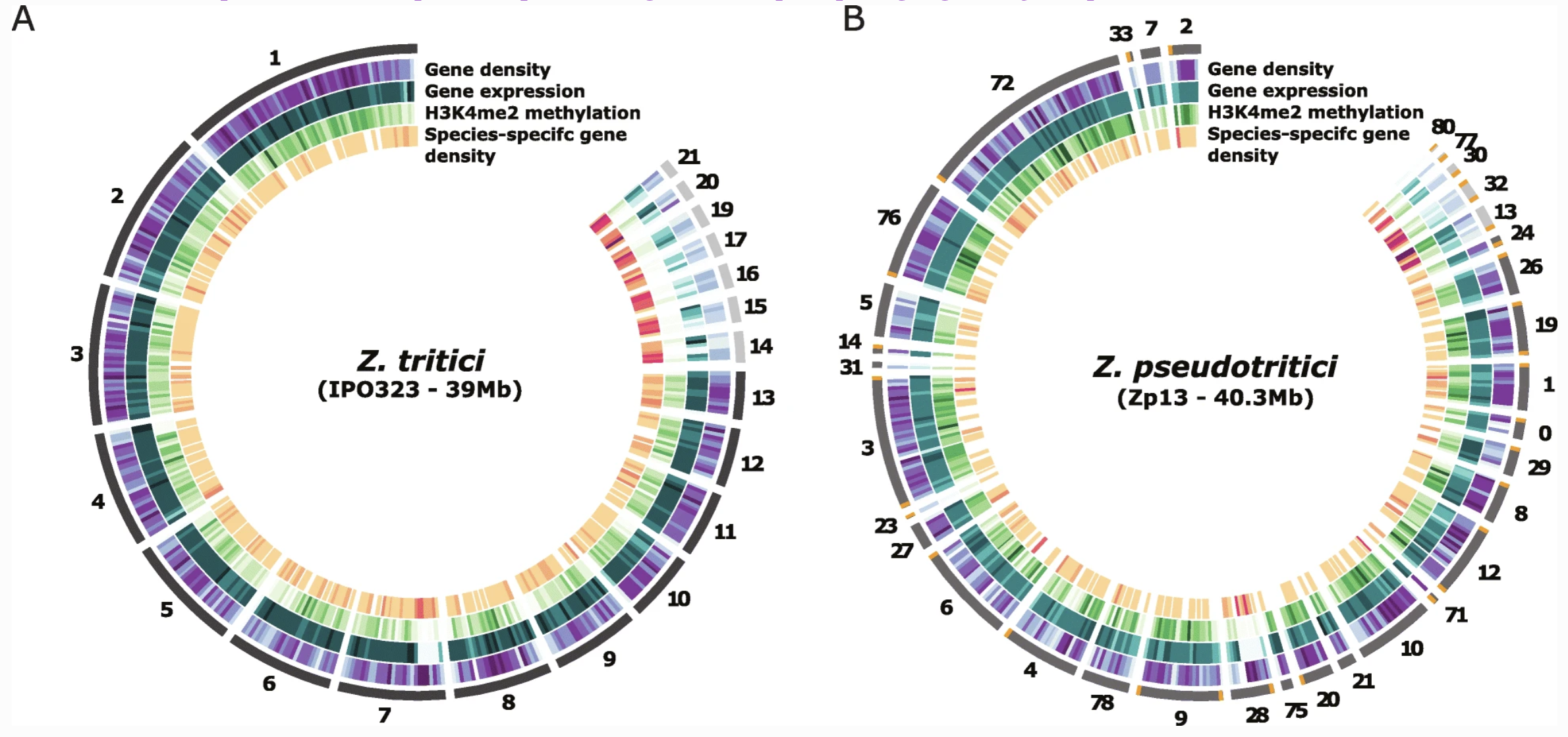Genomic and epigenomic architecture of a plant pathogen
Background
Antagonistic co-evolution can drive rapid adaptation in pathogens and shape genome architecture. Comparative genome analyses of several fungal pathogens revealed highly variable genomes, for many species characterized by specific repeat-rich genome compartments with exceptionally high sequence variability. Dynamic genome structure may enable fast adaptation to host genetics. The wheat pathogen Zymoseptoria tritici with its highly variable genome, has emerged as a model organism to study genome evolution of plant pathogens. Here, we compared genomes of Z. tritici isolates and of sister species infecting wild grasses to address the evolution of genome composition and structure.
Results
Using long-read technology, we sequenced and assembled genomes of Z. ardabiliae, Z. brevis, Z. pseudotritici and Z. passerinii, together with two isolates of Z. tritici. We report a high extent of genome collinearity among Zymoseptoria species and high conservation of genomic, transcriptomic and epigenomic signatures of compartmentalization (see image below).

We identify high gene content variability both within and between species. In addition, such variability is mainly limited to the accessory chromosomes and accessory compartments. Despite strong host specificity and non-overlapping host-range between species, predicted effectors are mainly shared among Zymoseptoria species, yet exhibiting a high level of presence-absence polymorphism within Z. tritici. Using in planta transcriptomic data from Z. tritici, we suggest different roles for the shared orthologs and for the accessory genes during infection of their hosts.
Conclusion
Despite previous reports of high genomic plasticity in Z. tritici, we describe here a high level of conservation in genomic, epigenomic and transcriptomic composition and structure across the genus Zymoseptoria. The compartmentalized genome allows the maintenance of a functional core genome co-occurring with a highly variable accessory genome.